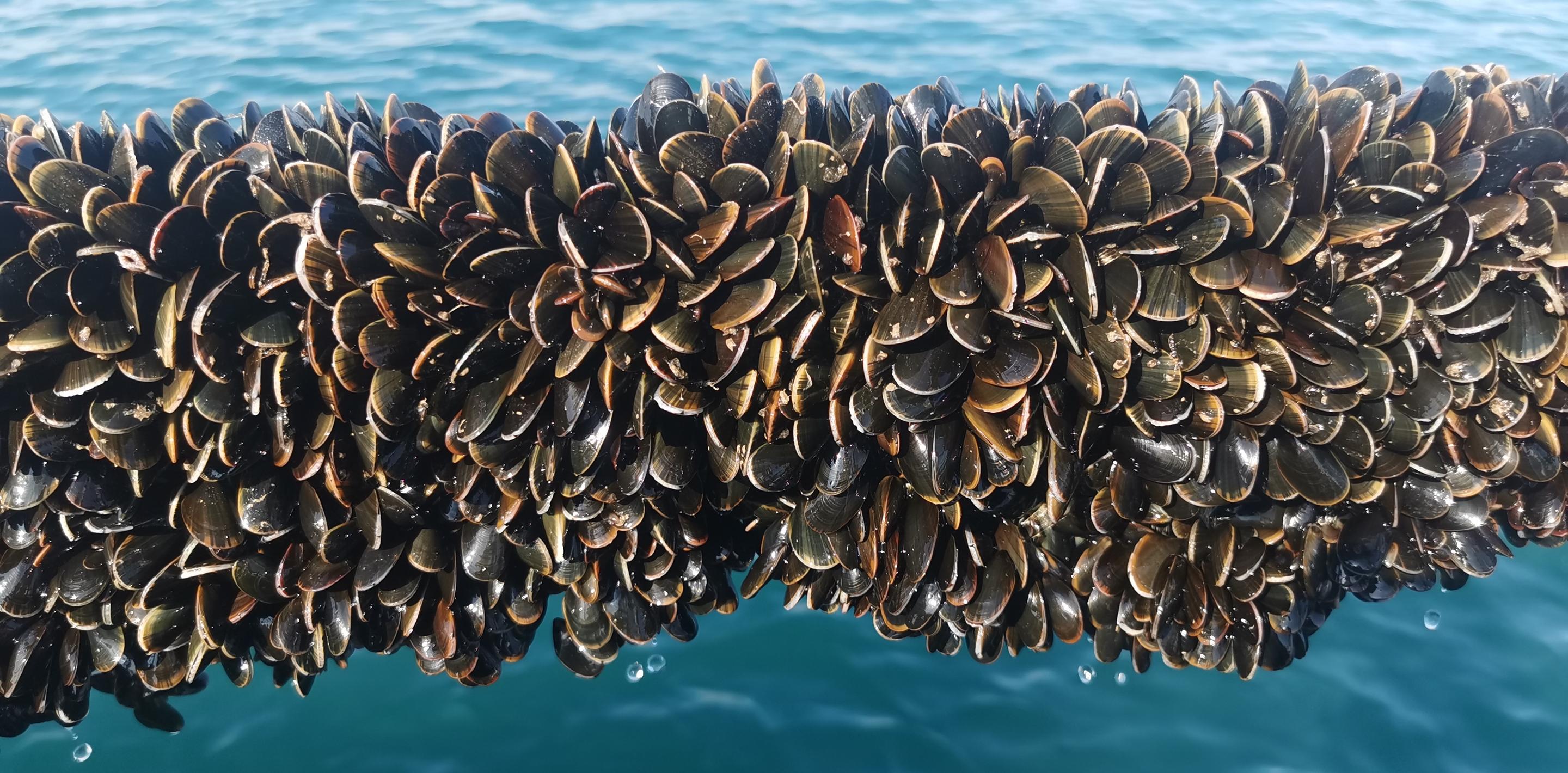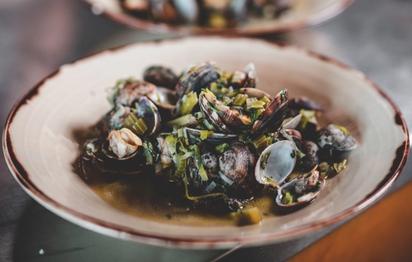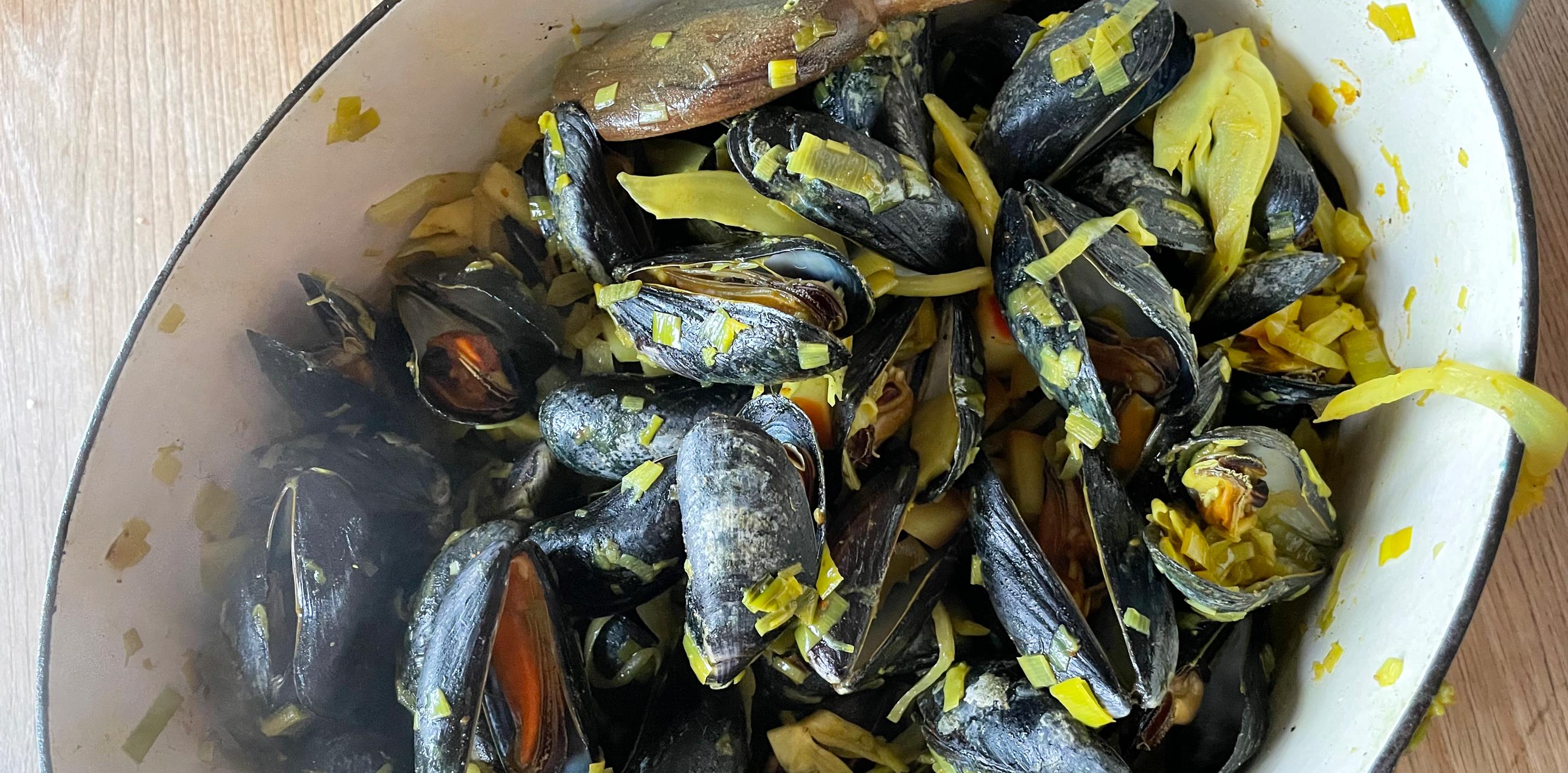
Discover the benefits of rope-grown mussels
The rope method for rearing mussels is about as ecologically friendly as aquaculture (seafood farming) gets. The joy of it is the sheer minimalism and lack of interference. There are no inputs – no chemicals are required to keep the mussels healthy and no added feed is needed to make them grow. There is no need for captive breeding as the young seed mussels, called spat, are collected by hanging specially hairy ropes in the waters of Lyme Bay during spawning season and the wild juvenile mussels attach themselves to the ropes.
The mussels are microscopic when they first settle on the ropes, but within a year to fifteen months, in the fertile waters of Lyme Bay, the mussels will be full of sweet, kelpy flavoured orange meat and be ready for a delicious healthy meal full of vitamins, minerals and omega 3 oils. Best of all, to get them fat and ready, you don’t even have to feed them. They will take all the nutrients they need by filtering the sea water that ebbs and flows around them.
As if all that wasn’t enough, it seems that a mussel farm can provide a positive ecological benefit to the waters in which it is sited. The mussel-clad ropes make a weedy underwater jungle that attracts other sea life, too. The farm is a habitat and nursery for all kinds of creatures, including anemones, starfish, marine worms, crabs, lobsters, prawns and many types of fish.
So what’s the catch? There isn’t one. Ecologically sound, good for the planet and good for you, why not pick up some mussels from your local fishmonger to try one of our many recipes because the final abiding virtue of mussels is the extreme ease and speed with which they can be transformed into a delightful dinner.
Visit Offshore Shellfish or follow us on Instagram @offshoreshellfish to learn more about their sustainable mussel farming.
Learn more and get confident with fish and shellfish

Tackling fresh fish takes confidence, knowledge and technique. It can seem a daunting task, but in this course Gelf will guide you through the skills you need. Once you’ve learned the techniques and practised it yourself you will finish the course feeling confident in your ability to cook fish and shellfish at home.
You will be introduced to varieties of fish seasonally available, updated on current sustainability guidelines and given advice on how to shop for the freshest fish. You will learn the basics of fish preparation including gutting, scaling and filleting three types of fish – flat, round and oily – with a particular focus on knife skills. And you will learn a variety of techniques including pan-frying, baking and stewing plus creating stocks and broths and a number of delicious recipes.

While wine and garlic are a classic in moules mariniere, I like the local touch of cider and leeks, with the surprising sweet and sharp contrast of fresh apple, especially a nice tart variety like a cox. This is a certainly a recipe ripe for tweaking – recently I added some lemon verbena leaves (I’d just dried a bunch) which was a lovely aromatic note. Another great twist is to add some fresh grated ginger and chopped chilli, as well as or instead of the leek.
View recipe